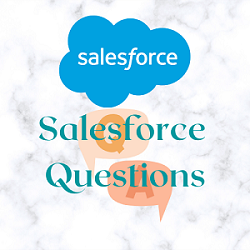Integrating Apex with Lightning Web Components (LWC) in Salesforce serves several important purposes, enabling developers to leverage both client-side and server-side capabilities for building robust and efficient applications.
Here are the key purposes of integrating Apex with LWC:
Accessing Salesforce Data:
Apex is used for server-side processing and can access and manipulate data stored in Salesforce databases.
LWC, being a client-side framework, can call Apex methods to fetch, insert, update, or delete records in Salesforce.
This integration facilitates seamless interaction with Salesforce data, allowing for dynamic and real-time updates in the user interface.
Complex Business Logic:
Apex is well-suited for implementing complex business logic and server-side operations.
LWC components can call Apex methods to perform calculations, validations, and other operations that require server-side processing.
This ensures that critical business logic is executed securely on the server, preventing potential security vulnerabilities on the client side.
Governor Limits:
Salesforce imposes governor limits to ensure fair resource usage and prevent abuse. Apex runs on the server and is subject to these limits.
By using Apex alongside LWC, developers can offload resource-intensive operations to the server, avoiding client-side limitations.
This ensures that applications remain scalable, reliable, and compliant with Salesforce platform constraints.
Integration with External Services:
Apex can be used to integrate Salesforce applications with external services, APIs, or databases.
LWC components can invoke Apex methods that, in turn, interact with external systems, providing a seamless and consistent user experience.
Security Considerations:
Apex runs on the server, and integrating it with LWC helps enforce security measures.
Sensitive operations, such as data retrieval or updates, are handled server-side, reducing the risk of exposing critical information or logic on the client side.
Performance Optimization:
LWC components can make use of asynchronous Apex methods to optimize performance.
Long-running or resource-intensive tasks can be delegated to Apex, preventing them from blocking the user interface and ensuring a responsive application.
Reusability and Maintainability:
Apex provides a centralized location for reusable server-side logic that can be shared among multiple Lightning components.
This promotes a modular and maintainable codebase, as changes to business logic or data processing can be implemented in a single location.
Combining Client-Side and Server-Side Strengths:
Integrating Apex with LWC allows developers to harness the strengths of both client-side and server-side development paradigms.
Client-side rendering with LWC provides a responsive and dynamic user interface, while Apex handles server-side logic, ensuring a well-balanced architecture.
In summary, integrating Apex with Lightning Web Components in Salesforce enables developers to create powerful, scalable, and secure applications by leveraging the strengths of both client-side and server-side development. It promotes best practices for data management, business logic implementation, and overall application architecture.


0 Comments
Post a Comment